How Alex Honnold made ‘the ultimate climb’—without a rope
His stunning scramble up the 3,000-foot granite wall known as El Capitan, in less than 4 hours, came after meticulous planning and training.


It’s 4:54 a.m. on a chilly November morning in 2016 in Yosemite National Park.
A full moon casts an eerie glow onto the southwest face of El Capitan, where Alex Honnold clings to the side of the granite wall with nothing more than the tips of his fingers and two thin edges of shoe rubber. He’s attempting to do something that professional rock climbers have long thought was impossible—a “free solo” ascent of the world’s most iconic cliff. That means he is alone and climbing without a rope as he inches his way up more than half a mile of sheer rock.
A light breeze rustles his hair as he shines his headlamp on the cold, smooth patch of granite where he must next place his foot. Above him, for several feet, the stone is blank, devoid of any holds. Unlike parts of the climb higher up, which feature shallow divots, pebble-size nubs, and tiny cracks that Alex can claw himself up with his freakishly strong fingers, this part—a barely less than vertical slab on a section called the Freeblast—must be mastered with a delicate balance of finesse and poise. Climbers call it friction climbing. “It’s like walking up glass,” Alex once said.
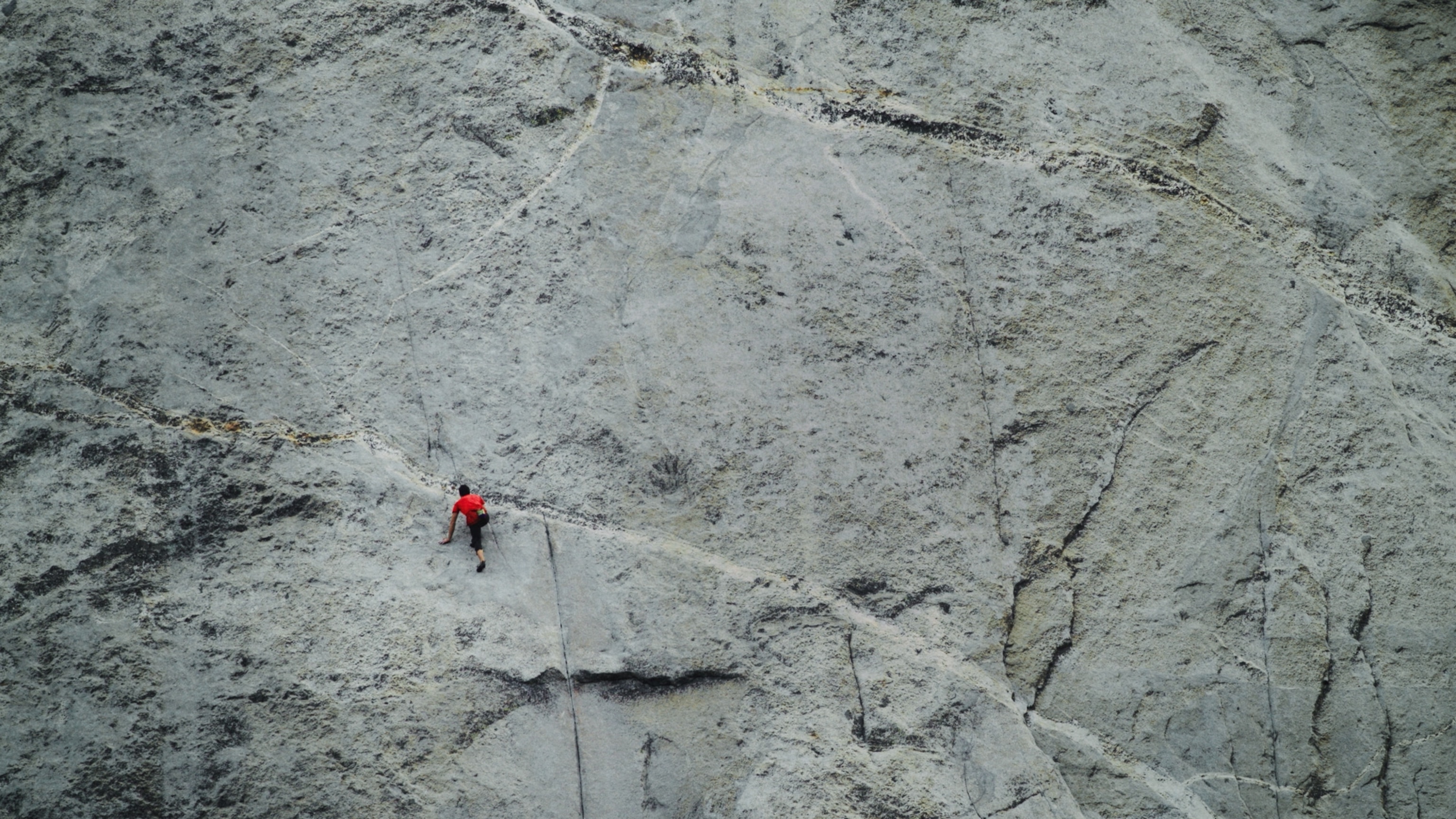
He wiggles his toes. They’re numb. His right ankle is stiff and swollen from a severe sprain he sustained two months earlier when he fell while practicing this part of the route. That time he was attached to a rope. Now, falling isn’t an option. Free soloing isn’t like other dangerous sports in which you might die if you screw up. There is no “maybe” when you’re 60 stories up without a rope.
Six hundred feet below, I sit on a fallen tree watching the tiny halo of Alex’s light. It hasn’t moved in what feels like an eternity but is probably less than a minute. And I know why. He’s facing the move that has haunted him ever since he first dreamed up this scheme seven years ago. I’ve climbed this slab myself, and the thought of doing it free solo makes me nauseated. The log on which I’m sitting lies less than a hundred yards from where Alex will land if he slips.
A sudden noise jolts me back to the present. My heart skips. A cameraman, part of the crew recording the feat, hustles up the trail toward the base of the wall. I can hear the static of his walkie-talkie. “Alex is bailing,” he says.
Thank God, I think. Alex will live.
I will talk to him later, but I already know why he’s backing off. He’s not feeling it. Of course he isn’t—it’s madness. Maybe, I let myself consider, this isn’t meant to be.
Some in the climbing world view free soloing as something that isn’t meant to be. Critics regard it as reckless showmanship that gives the sport a bad name, noting the long list of those who’ve died attempting it. Others, myself included, recognize it as the sport’s purest expression. Such was the attitude of an Austrian alpinist named Paul Preuss, considered by climbing historians to be the father of free soloing. He proclaimed that the very essence of alpinism was to master a mountain with superior physical and mental skill, not “artificial aid.” By age 27, Preuss had made some 150 ropeless first ascents and was celebrated throughout Europe. Then, on October 3, 1913, while free soloing the North Ridge of the Mandlkogel in the Austrian Alps, he fell to his death.
But Preuss’s ideas would live on, influencing successive generations of climbers and inspiring the “free climbing” movement of the 1960s and ’70s, which espoused using ropes and other gear only as safety devices, never to assist a climber’s upward progress. The next serious free soloist of note appeared in 1973, when “Hot” Henry Barber shocked the climbing community by scaling the 1,500-foot north face of Yosemite’s Sentinel Rock without a rope. Three years later, John Bachar, a 19-year-old from Los Angeles, free soloed New Dimensions, an arduous 300-foot crack in Yosemite. No one upped the ante until 1987, when Peter Croft, an unassuming Canadian, free soloed two of Yosemite’s most celebrated routes—Astroman and Rostrum—back-to-back in the same day.
The Climbing Life
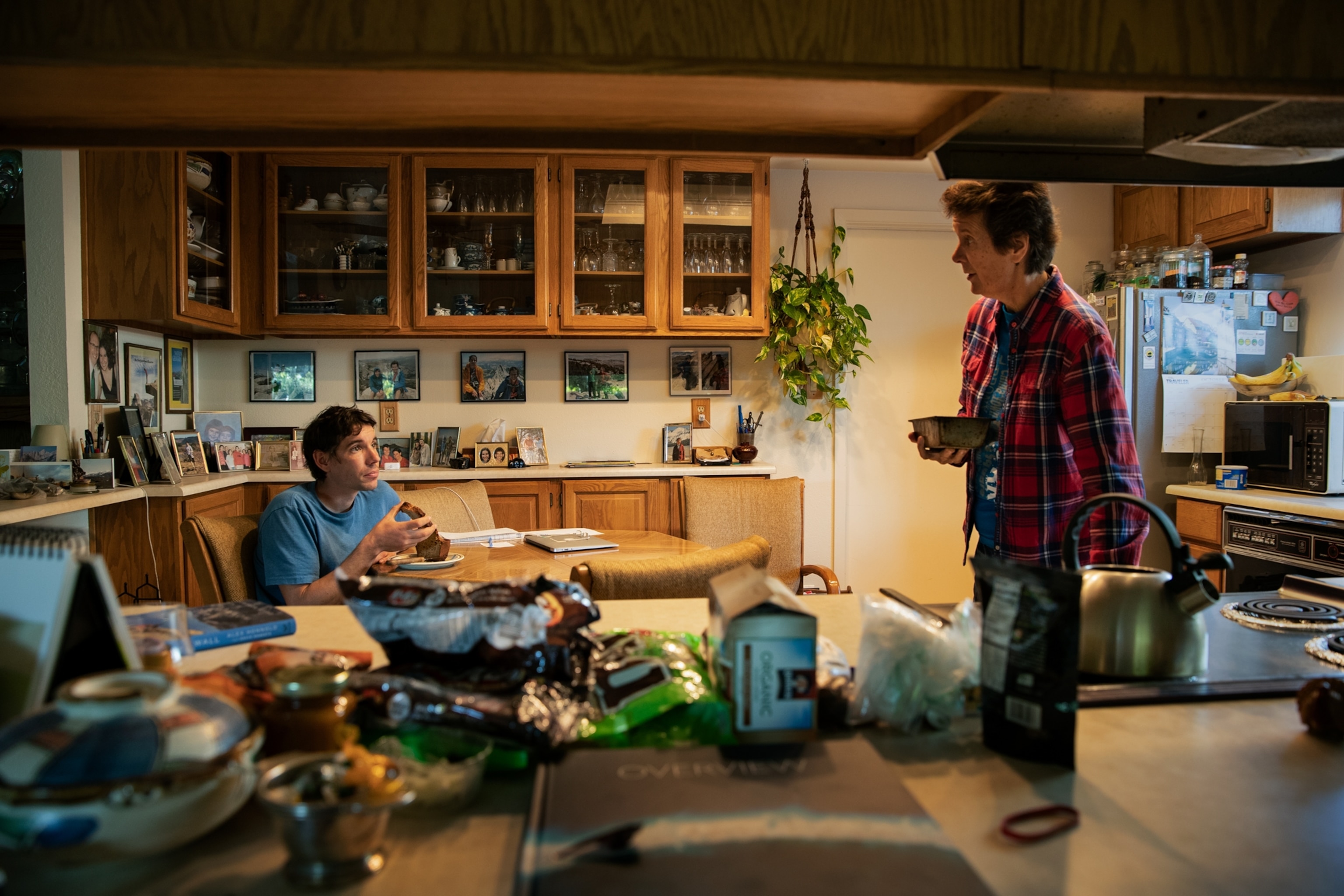
Croft’s achievement stood until 2007, when a shy, doe-eyed 22-year-old from Sacramento named Alex Honnold showed up in Yosemite Valley. He stunned the climbing world by repeating Croft’s Astroman-Rostrum masterpiece. The next year he free soloed two famously tough routes—Zion National Park’s Moonlight Buttress and the Regular Northwest Face of Yosemite’s Half Dome—climbs so long and technically difficult that no serious climber had imagined they could be scaled without a rope. As sponsorship offers poured in and journalists and fans hailed his achievements, Alex was secretly contemplating a much bigger goal.
It’s important to note that Alex’s quest to free solo El Capitan wasn’t some adrenaline-fueled stunt that he’d come up with on a whim. In 2009, during our first climbing expedition together, he mentioned the idea to me. I thought he was totally crazy, but there was something about his supreme confidence and the way he effortlessly moved up mind-bendingly difficult rock faces that made the comment seem like more than just an idle boast.
Alex researched several El Capitan routes, finally settling on Freerider, a popular test piece for veteran climbers and one that usually requires multiple days to ascend. Its 30 or so pitches—or rope lengths—challenge a climber in practically every possible way: the strength of fingers, forearms, shoulders, calves, toes, back, and abdomen, not to mention balance, flexibility, problem solving, and emotional stamina. Certain times of the day the sun heats the rock so that it burns to touch it; hours later the temperature can plummet below freezing. Storms blow in, powerful thermal updrafts lash the wall, springs leak out of cracks. Bees, frogs, and birds can burst from crevices during crucial moves. Rocks of all sizes can suddenly give way and tumble down.
The Freeblast may be the scariest part, but more physically demanding sections await higher up: a chimney-like crack he’ll have to squirm through; a wide gap where he’ll have to perform almost a full split, pressing the rock with his feet and hands to inch his way up. And then 2,300 feet above the valley floor is the route’s crux—called the Boulder Problem—a blank face that requires some of the most technically challenging moves of the climb.
Over a year, Alex spent hundreds of hours on Freerider, attached to ropes, working out a precisely rehearsed choreography for each section, memorizing thousands of intricate hand and foot sequences. Afterward he’d retreat to “the box,” a RAM ProMaster van. (Vans have served as his mobile base camp and home, off and on, for the past 12 years.) There he would record each day’s training details in spiralbound notebooks.
“So how did it go up there?” I ask him one evening, as he’s preparing a vegan meal in the kitchenette of his van. He’d been rehearsing the Boulder Problem that day.
“I’ve done it 11 or 12 times now without falling,” he replies. “But it’s definitely something you have to get psyched up for.” He pantomimes the 11-move sequence for me. Later he describes it move by move in his own special argot: “Left foot into the little thumb sprag crack thing. Right foot into this little dimple that you can toe in on pretty aggressively so it’s opposing the left hand, then you can, like, zag over across to this flat, down-pulling crimp that’s small but you can bite it pretty aggressively. I palm the wall a little bit so I can pop my foot up and then reach up to this upside-down thumb sprag crimp thing.”


“How big is that hold?” I ask.
“It’s the worst hold on the route.” Alex looks at me with his eyes open wide, holding his thumb and forefinger about an eighth of an inch apart. “It’s maybe this big.”
But before he could tackle the Boulder Problem, he’d have to get over the Freeblast, which was proving to be the most vexing variable in this life-or-death equation. I join him on one of those roped training sessions, and on the pitch where he’d stopped in November, he slips once again. By my tally, it’s the third time he has fallen here. “That move is really insecure. I don’t like it,” he tells me as we pause at a point just above slab. At that moment, I realize that Alex will never have this section mastered to his satisfaction—no matter how many times he rehearses. It’s the one move on the route that he can’t bully into submission. And he must know it too.
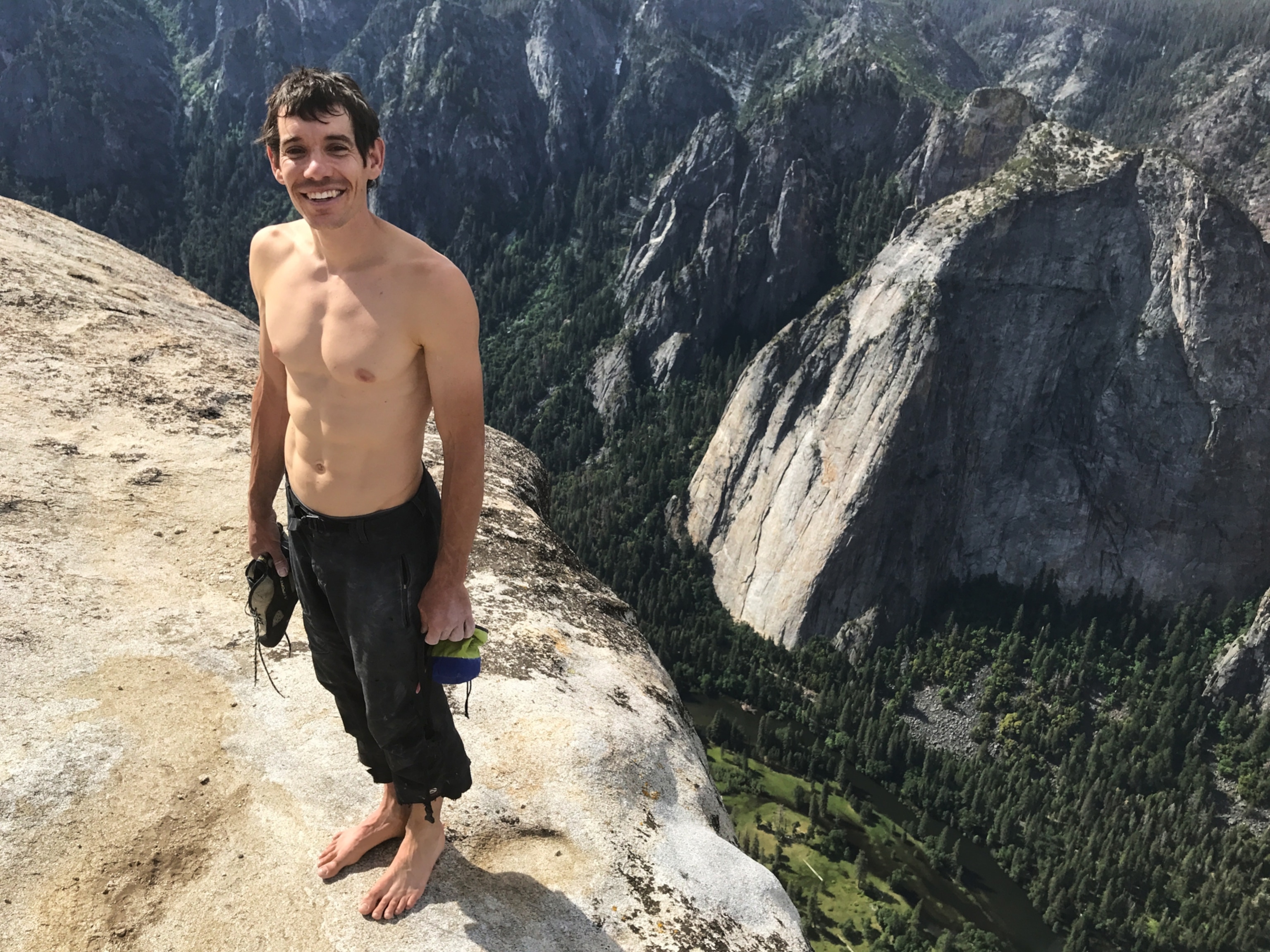
Saturday morning, June 3, 2017, seven months after Alex’s aborted attempt, I’m in the meadow near the foot of El Capitan. The tall grass is covered with dew. The sky is gray, as it always is just before dawn. The only sound is a faint rustle of wind in the tall pine trees. I squint through a telescope, and there is Alex, 600 feet above the valley floor, moving up onto the Freeblast, the glassy slab that has tormented him for nearly a decade. His movements, normally so smooth, are worrisomely jerky. His foot tap-tap-taps against the wall as if he’s feeling his way tentatively into the slab. And then, just like that, he’s standing on a ledge several feet above the move that has been hanging over his head for years. I realize I’ve been holding my breath, so I consciously exhale. Thousands of moves are still to come, and the Boulder Problem looms far above, but he won’t be turning back this time. Alex Honnold is now well on his way to completing the greatest rock climb in history.

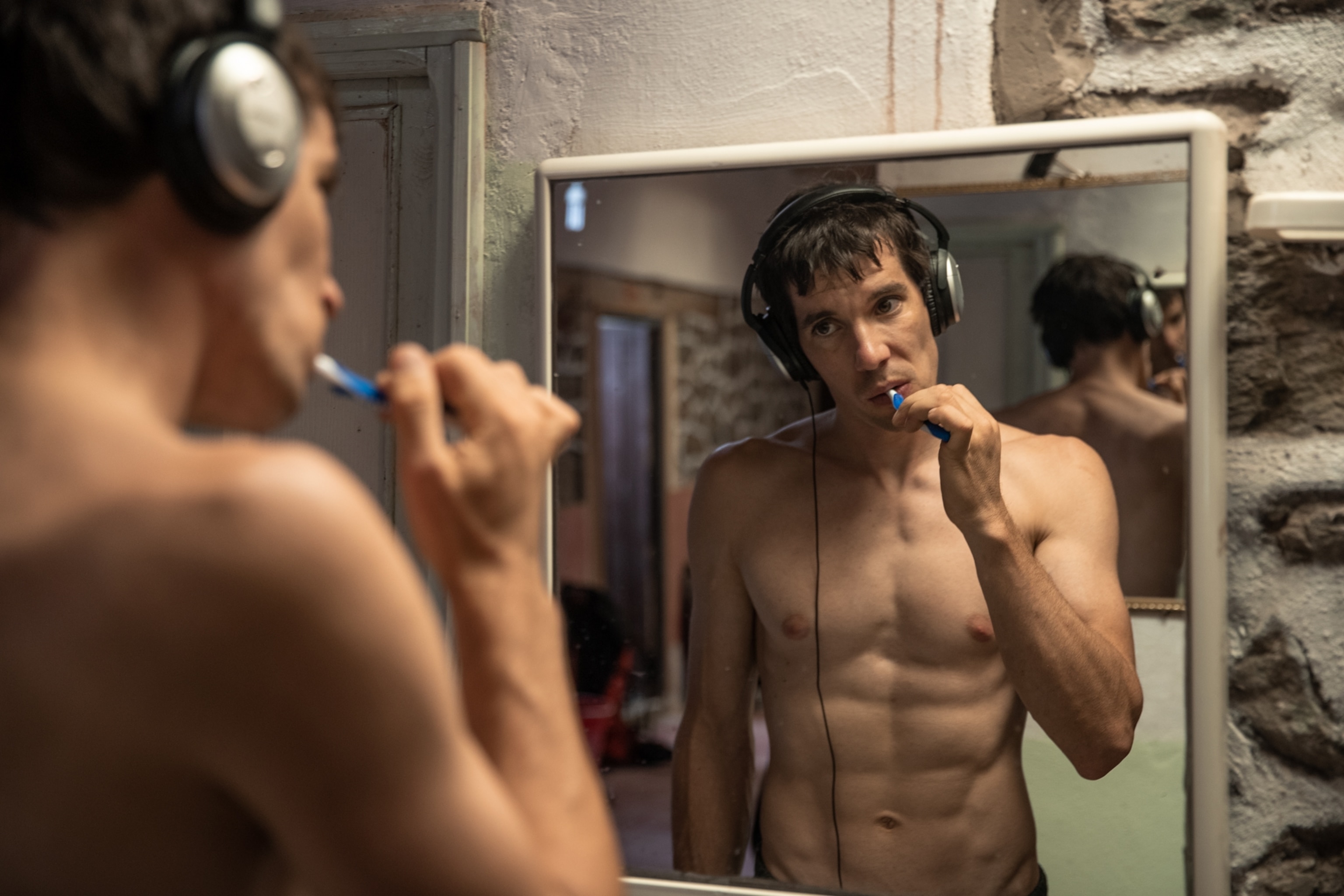
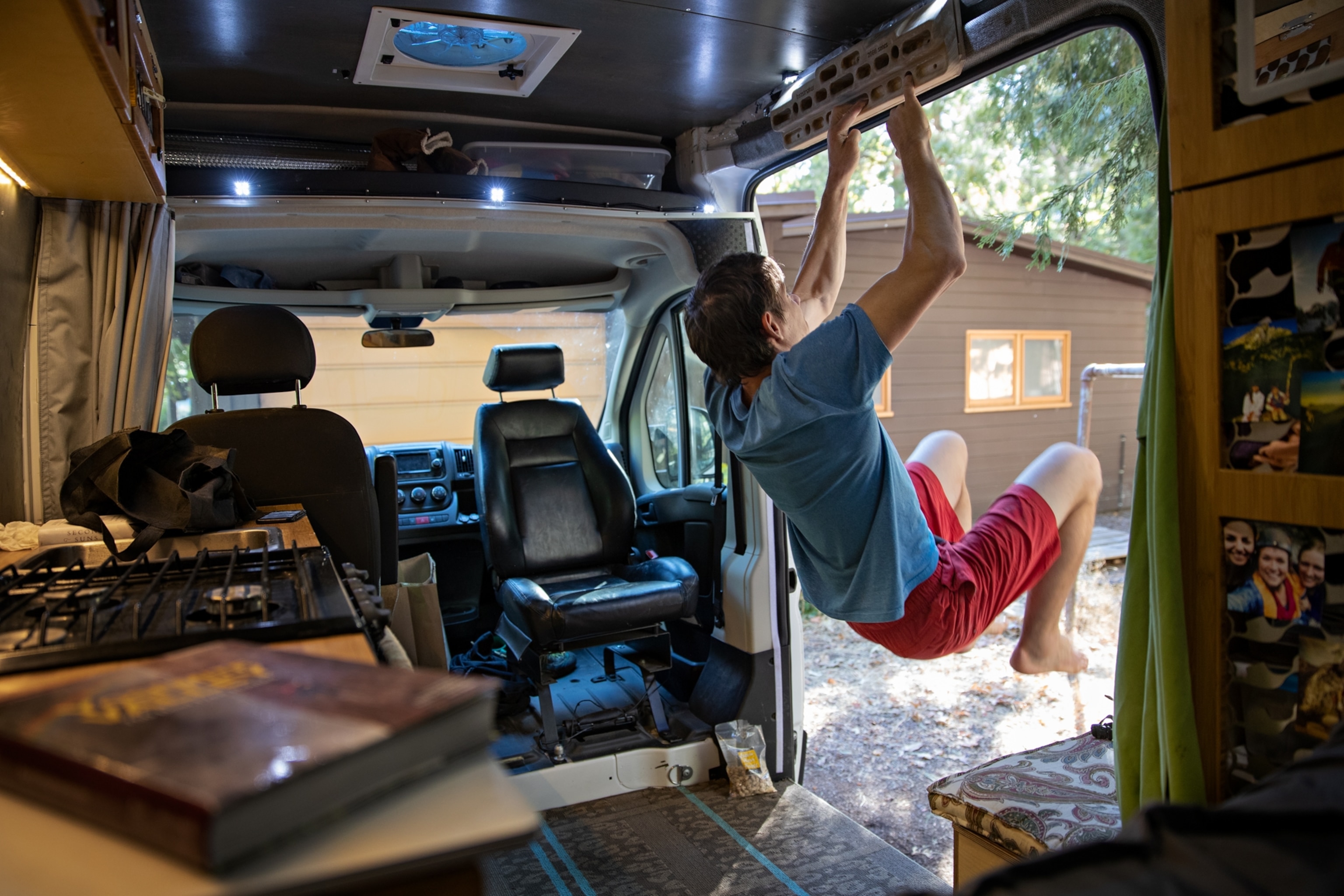

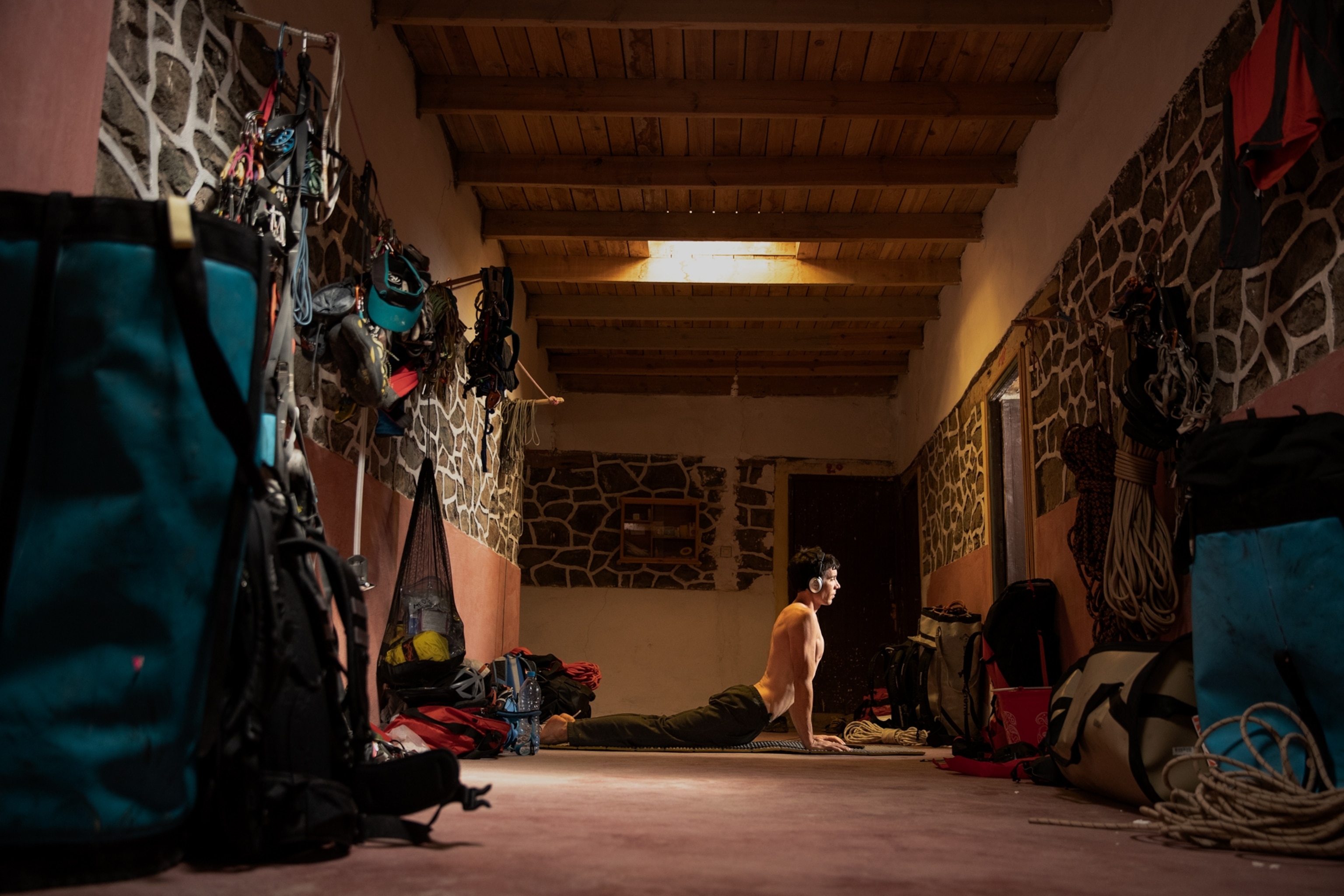

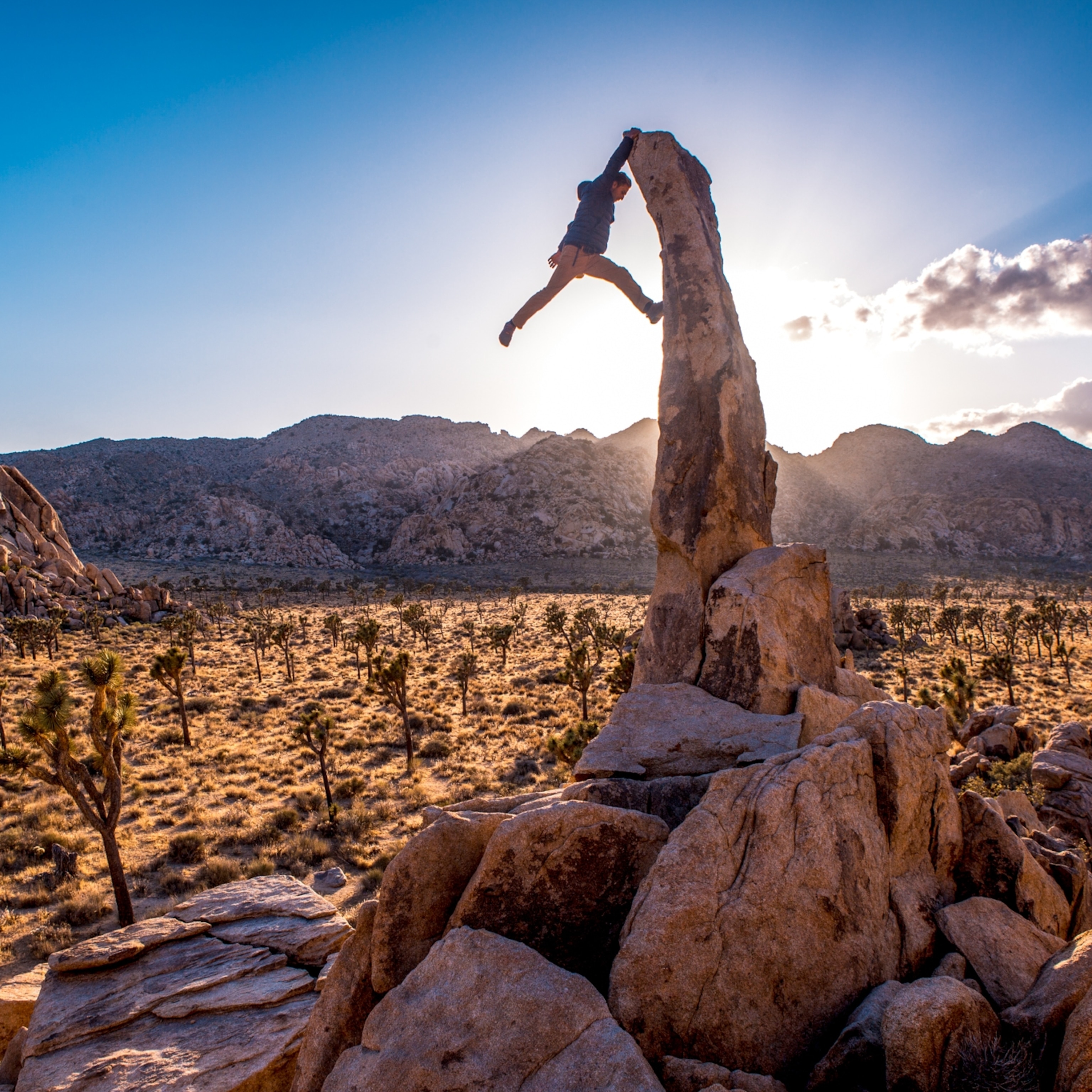

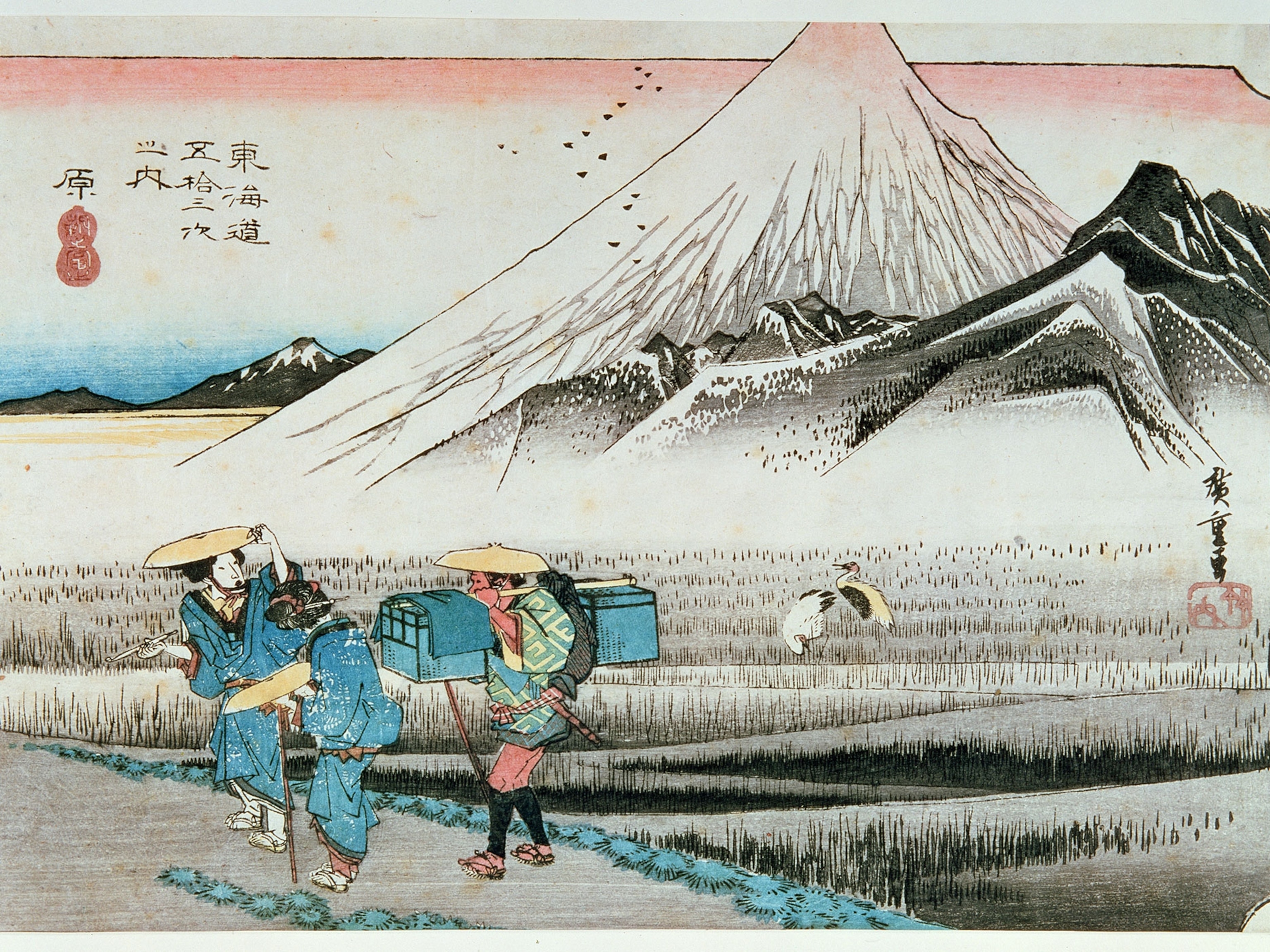
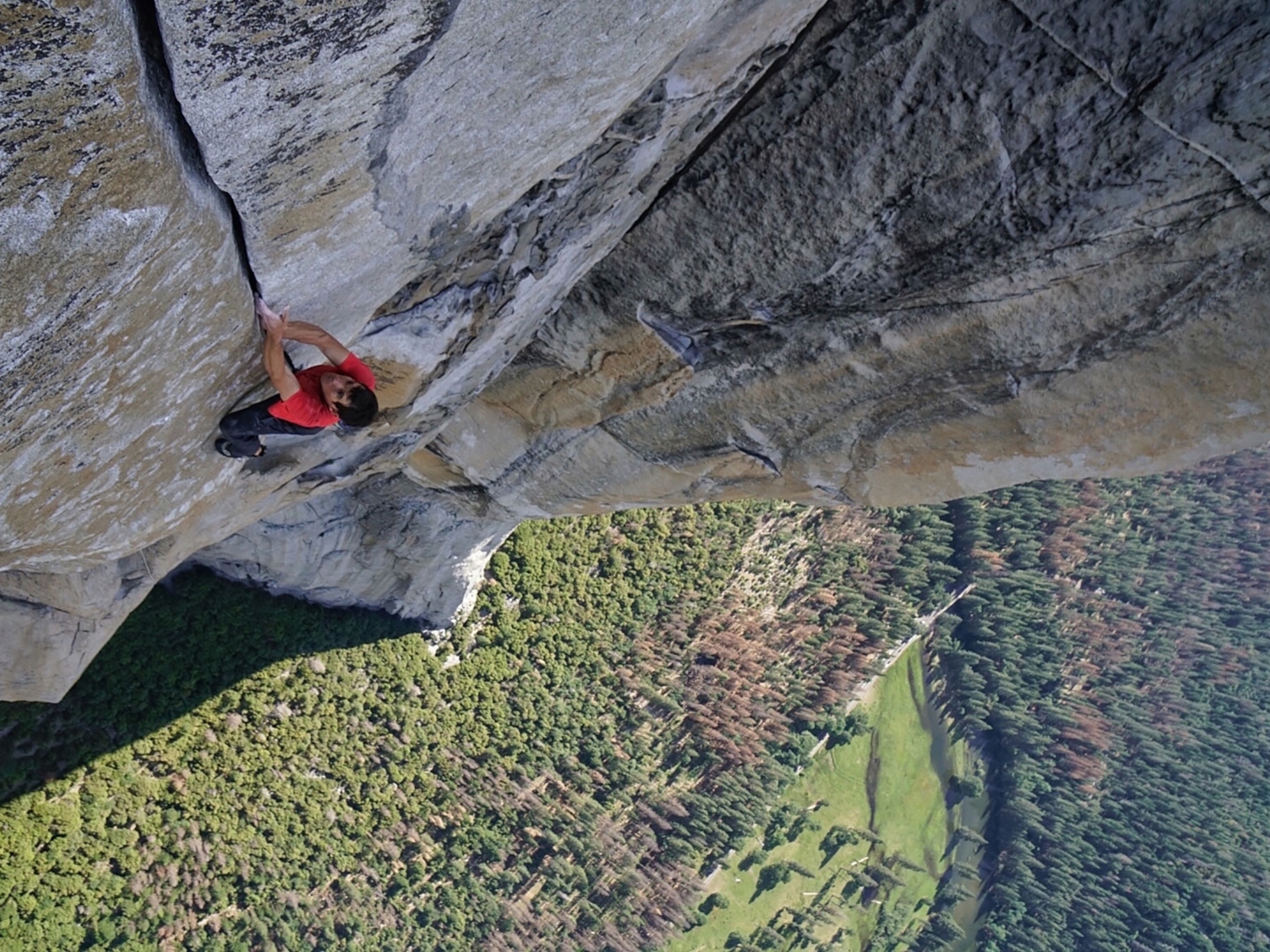
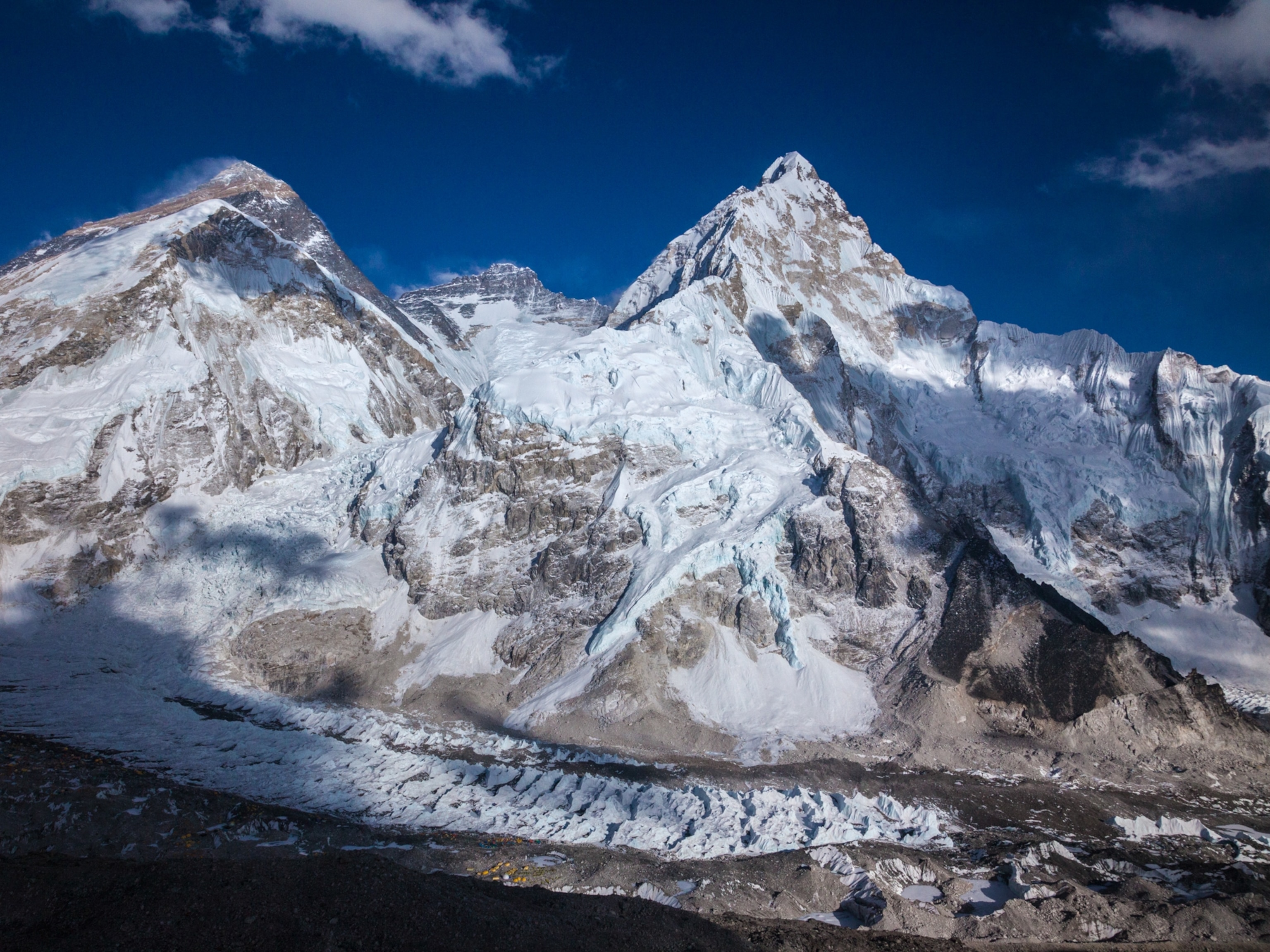

_4x3.jpg)